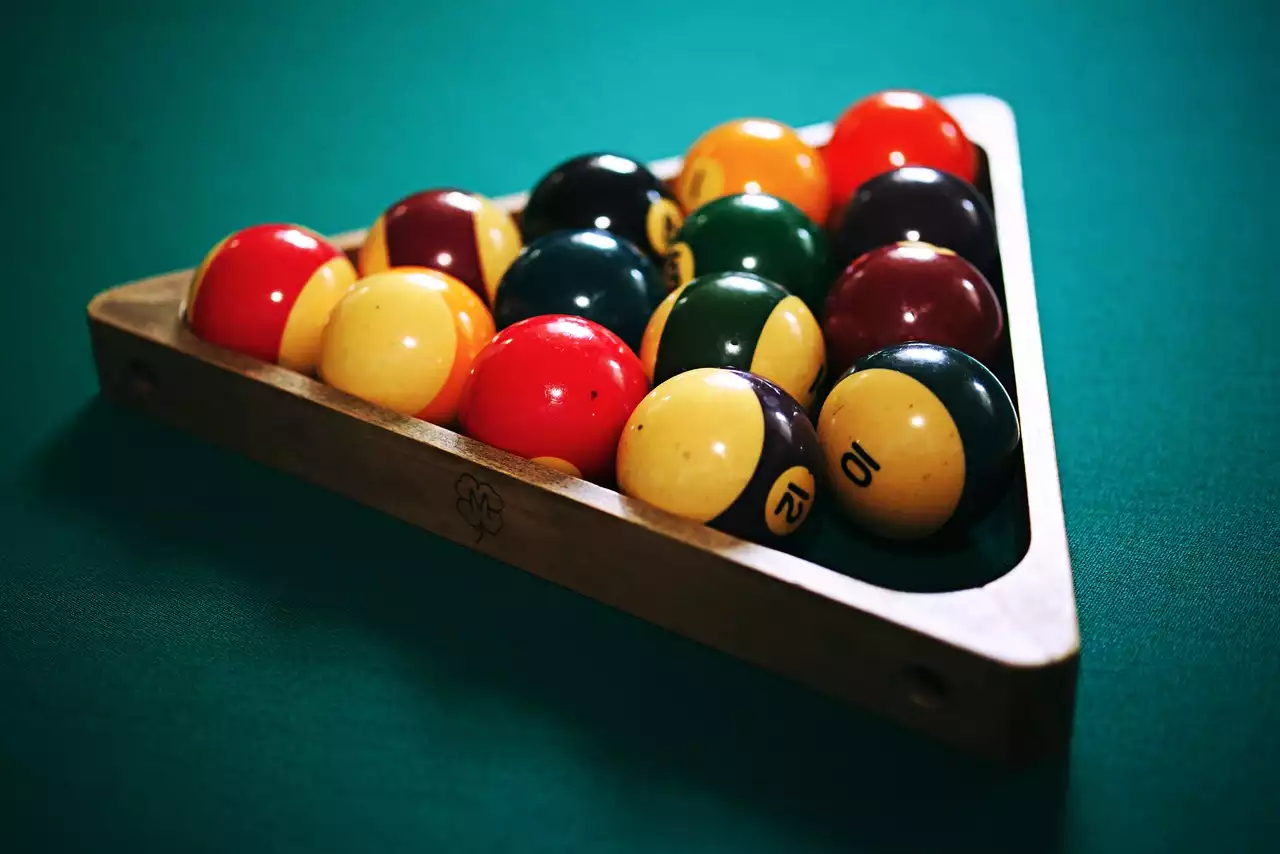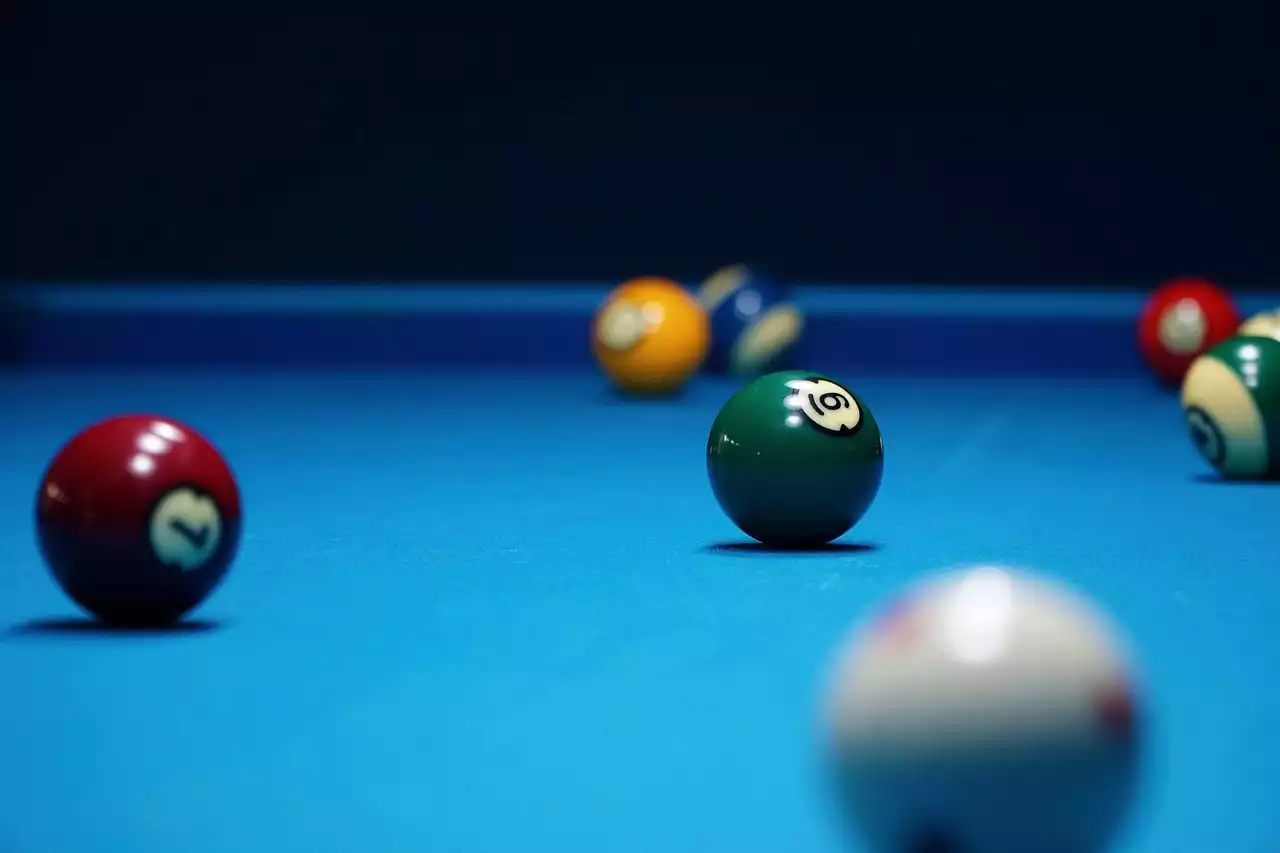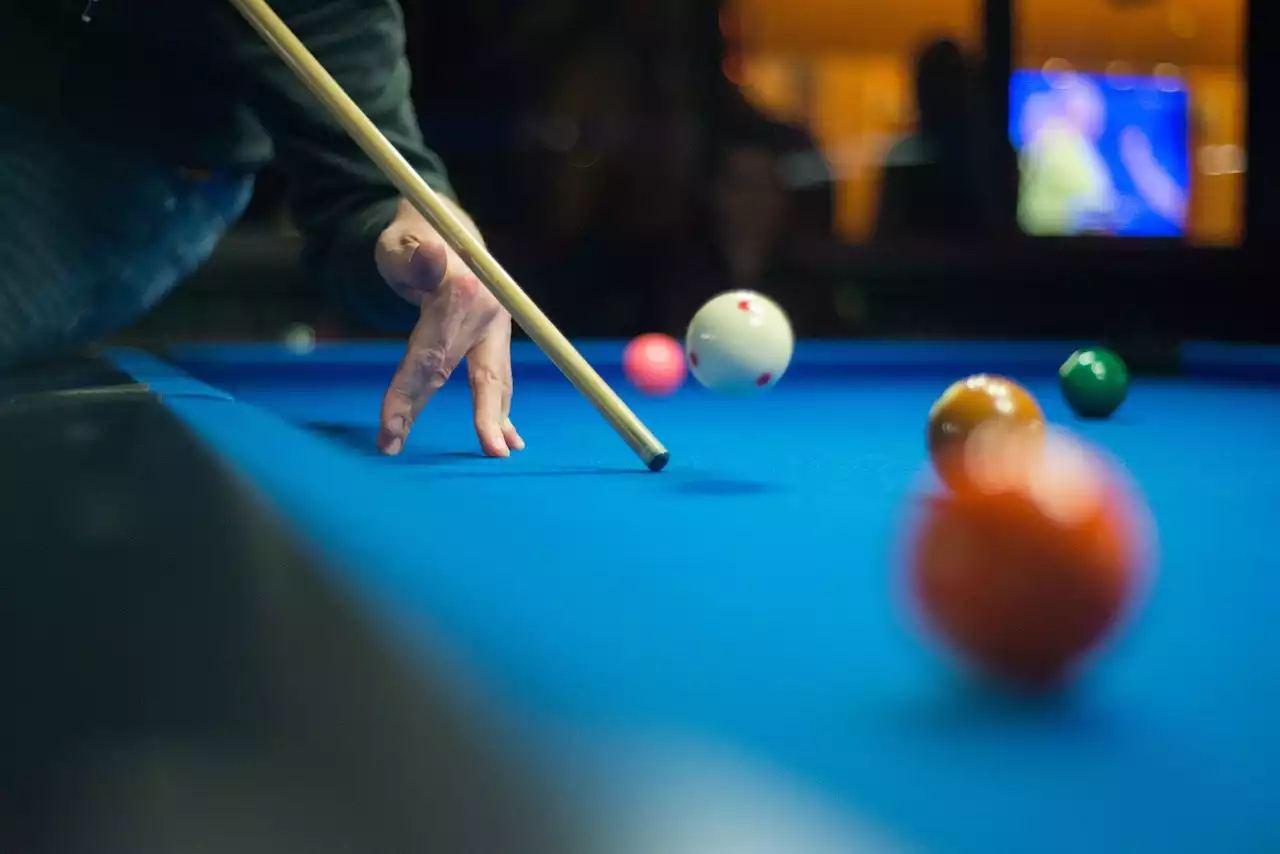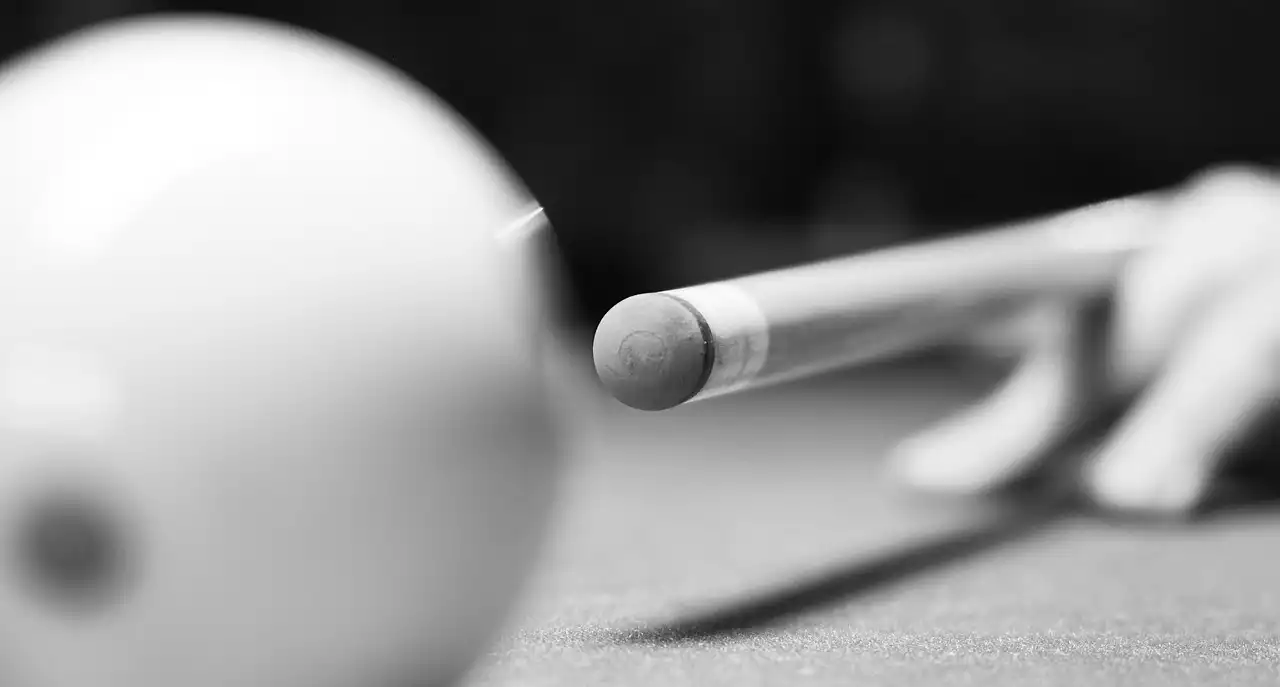The importance of a strong break
Breaking in pool is the most important shot of the game. A strong break can give you the upper hand and put your opponent on the defensive, while a weak break can leave you struggling to catch up. It's important to understand the significance of the break and to master it if you want to improve your game.
A strong break can also help you control the game by setting the pace and determining the position of the balls. If you break with enough power and accuracy, you can create a cluster of balls in your favor, making it easier to pocket them and win the game. However, if you break too softly or miss-hit the cue ball, you can lose control of the game and allow your opponent to take the lead.
To become a better player, you must learn to break with power and precision. In the following sections, we'll provide you with tips and tricks to help you master the break and improve your game.
Common mistakes when breaking in pool
Breaking in pool may seem like a straightforward shot, but there are several common mistakes that many players make. These mistakes can reduce the power and accuracy of your break, and even cause you to lose control of the game. Here are some common mistakes to avoid when breaking in pool:
1. Hitting the cue ball off-center
One of the most common mistakes when breaking in pool is hitting the cue ball off-center. When you hit the cue ball off-center, it can cause the ball to spin or jump, reducing its accuracy and power. To avoid this, make sure to hit the cue ball in the center, using a smooth and level stroke.
2. Using too much force
Another common mistake when breaking in pool is using too much force. While it's important to hit the cue ball with power, using too much force can cause the ball to jump off the table or lose control of the game. To avoid this, use a controlled stroke and focus on accuracy rather than power.
3. Poor body position
Body position is critical when breaking in pool. A poor body position can affect the accuracy and power of your break. To avoid this, make sure to stand with your feet shoulder-width apart, and your weight evenly distributed. Your back foot should be slightly behind your front foot, and your body should be bent slightly forward at the waist.
By avoiding these common mistakes, you can improve the power and accuracy of your break and take your game to the next level.
Preparing for a strong break - choosing the right cue, chalk and stance
Preparing for a strong break is just as important as the mechanics of the shot itself. Choosing the right cue, chalk, and stance can make all the difference in the power and accuracy of your break.
1. Choosing the right cue
Choosing the right cue for your break is critical. A cue with a solid, heavy tip can help you generate more power and control, while a lighter cue can give you more accuracy and finesse. Make sure to choose a cue that feels comfortable in your hands and fits your playing style.
2. Chalking your cue
Chalking your cue is essential for a strong break. Chalk helps reduce friction between the tip of the cue and the cue ball, allowing for a smoother stroke and better accuracy. Make sure to chalk your cue before every shot, and use a high-quality chalk for the best results.
3. Stance
Your stance is critical when breaking in pool. A good stance can help you generate more power and accuracy, while a poor stance can reduce both. Make sure to stand with your feet shoulder-width apart, and your weight evenly distributed. Your back foot should be slightly behind your front foot, and your body should be bent slightly forward at the waist.
By preparing for your break with the right cue, chalk, and stance, you can improve your chances of a strong and accurate break.
The mechanics of a powerful break
The mechanics of a powerful break involve several key factors, including grip, speed, and follow-through. Here's a breakdown of the mechanics involved in a powerful break:
1. Grip
Your grip on the cue is critical for a powerful break. Make sure to grip the cue firmly, but not too tightly. Your grip should be relaxed and comfortable, allowing for a smooth and controlled stroke.
2. Speed
The speed of your stroke is also important for a powerful break. You should aim to strike the cue ball with a fast and controlled stroke, generating as much power as possible without losing control of the cue ball.
3. Follow-through
Follow-through is important for a powerful break. After striking the cue ball, make sure to follow through with your stroke, extending your arm fully and keeping your cue level. This will help generate more power and accuracy, and reduce the risk of losing control of the cue ball.
By mastering the mechanics of a powerful break, you can improve your chances of a successful break and take control of the game.
Tips for improving your break - grip, speed, and follow-through
Improving your break requires practice and patience. Here are some tips to help you improve your grip, speed, and follow-through:
1. Grip
To improve your grip, practice holding the cue with a relaxed and comfortable grip. Use your thumb, index, and middle fingers to grip the cue, and the other two fingers to support it. Practice holding the cue at different angles and heights to find the best grip for your playing style.
2. Speed
To improve your speed, practice striking the cue ball with a fast and controlled stroke. Focus on accuracy rather than power, and gradually increase your speed as you gain more confidence.
3. Follow-through
To improve your follow-through, practice extending your arm fully after striking the cue ball. Keep your cue level and follow through with a smooth and controlled stroke.
By practicing these tips, you can improve the power and accuracy of your break and take your game to the next level.
Practicing your break - drills and exercises
Practice is essential for improving your break. Here are some drills and exercises to help you practice your break:
1. Straight-in shot
Practice breaking from the center of the table, aiming for a straight-in shot on the first ball. This will help you focus on accuracy and power, and improve your chances of pocketing the ball.
2. Clustering the balls
Practice breaking with the aim of clustering the balls in your favor. This will help you control the game and improve your chances of winning.
3. Speed control
Practice breaking with different levels of speed, focusing on accuracy and control rather than power. This will help you adapt to different situations and opponents, and improve your overall game.
By practicing these drills and exercises, you can improve your break and become a better player.
Analyzing your break - identifying weaknesses and making adjustments
Analyzing your break is important for identifying weaknesses and making adjustments. Here are some tips for analyzing your break:
1. Record your breaks
Record your breaks and watch them back to identify any weaknesses or areas for improvement. Pay attention to your grip, speed, and follow-through, and make notes on any adjustments you need to make.
2. Ask for feedback
Ask for feedback from other players or a coach to get a different perspective on your break. They may be able to identify areas for improvement that you haven't noticed.
3. Experiment with different techniques
Experiment with different techniques and approaches to find what works best for you. Don't be afraid to try new things and make adjustments to your break as needed.
By analyzing your break and making adjustments, you can improve your chances of success and take your game to the next level.
Playing against different opponents - adapting your break for different games
Playing against different opponents requires adapting your break for different games. Here are some tips for adapting your break:
1. Adjust your speed
Adjust your speed based on your opponent's playing style. If your opponent is a slow and methodical player, you may need to adjust your speed to keep up. If your opponent is a fast and aggressive player, you may need to slow down to maintain control.
2. Experiment with different breaks
Experiment with different breaks to find what works best against different opponents. If your opponent is breaking from the left side of the table, you may need to break from the right side to gain an advantage.
3. Be flexible
Be flexible and adaptable in your approach. Don't be afraid to change your strategy if it's not working, and be willing to try new things to gain an advantage.
By adapting your break for different opponents, you can improve your chances of success and become a more well-rounded player.
The importance of consistent practice and patience
Finally, the most important factor in improving your break is consistent practice and patience. Improving your break requires time, effort, and dedication. By practicing regularly and focusing on improving your technique, you can become a better player and master the break.
It's important to remember that improving your break takes time and patience. Don't get discouraged if you don't see immediate results, and don't be afraid to make mistakes. Every mistake is an opportunity to learn and improve.
By practicing consistently and being patient with yourself, you can improve your break and take your game to the next level.




